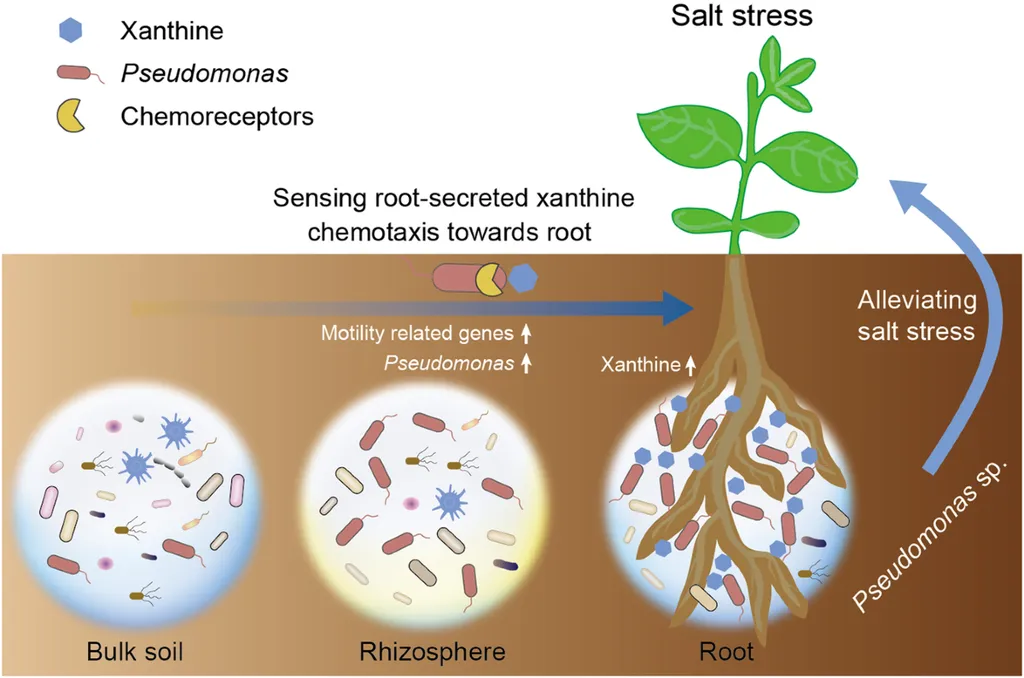In the vast, often harsh landscapes where salt-tolerant plants like Tamarix chinensis thrive, a silent battle for survival and dominance is being waged at a microscopic level. A recent study published in the journal Environmental Microbiome, which translates to “Environmental Microbiome” in English, has shed light on the intricate dance between parasitic plants, their hosts, and the bacterial communities that call their roots home. This research, led by Luyao Tang from the School of Pharmacy at Shandong Second Medical University, could have significant implications for agriculture, land reclamation, and even the energy sector.
The study focused on the parasitic plant Cistanche tubulosa and its host, Tamarix chinensis, exploring how different parasitic statuses affect the bacterial communities associated with their roots. The findings reveal a complex interplay where the parasite, rather than the host, plays a dominant role in shaping the root microbiota.
“Our results indicate that parasitic status significantly affects the distribution of root bacterial communities, bacterial transfer, and material metabolism of the two plants at different parasitic statuses,” said Luyao Tang, the lead author of the study. This discovery challenges conventional wisdom and opens new avenues for understanding plant-microbe interactions under stress conditions.
The research found that the bacterial communities associated with the parasitic plant Cistanche tubulosa contained more genes related to plant growth promotion, salt-alkali stress resistance, and substance metabolism. This suggests that the parasite might be equipping itself with a robust toolkit to survive and thrive in saline-alkaline environments. For the energy sector, this could translate into innovative strategies for land reclamation and bioenergy production in marginal lands.
The study also highlighted the importance of environmental factors such as salinity, ammonium, and total potassium in shaping the bacterial communities of both plants. This underscores the need for a holistic approach to understanding and managing plant-microbe interactions in stressed environments.
The implications of this research are far-reaching. By unraveling the complex web of interactions between parasitic plants, their hosts, and their associated microbiomes, scientists can develop more effective strategies for land reclamation and sustainable agriculture. For the energy sector, this could mean harnessing the power of these microbial communities to improve bioenergy production in saline-alkaline soils.
As we grapple with the challenges of climate change and land degradation, understanding these microscopic interactions becomes increasingly important. The work of Luyao Tang and his team provides a crucial piece of the puzzle, offering insights that could shape the future of agriculture and energy production in some of the world’s most challenging environments.
In the words of Luyao Tang, “Our findings reflect the adaptive mechanisms of plants and bacteria under parasitic relationships and provide ideas for the utilization of saline-alkaline land.” This research not only advances our scientific understanding but also paves the way for practical applications that could benefit industries and ecosystems alike.

